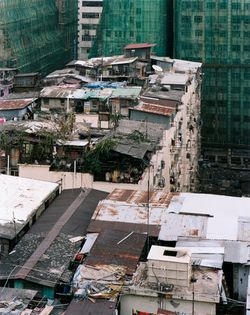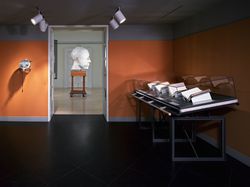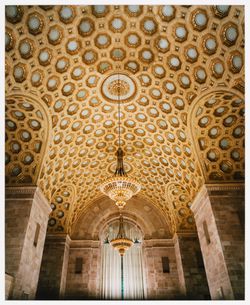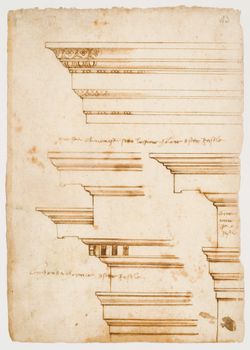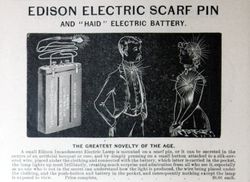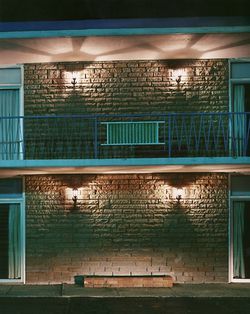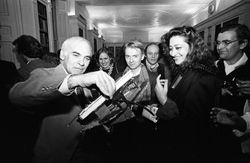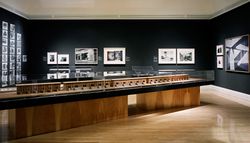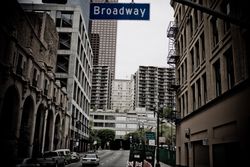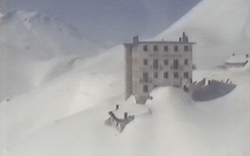Learning from... Hong Kong
Self-built settlements on the roofs of high-rise buildings have been an integral part of Hong Kong’s history for over half a century. Rooftop structures range from basic shelters for the disadvantaged to intricate multi-storey constructions equipped with the amenities of modern life. Rufina Wu and Stefan Canham use the tools of an architect and a photographer to document(...)
Paul-Desmarais Theatre
3 May 2012 , 7pm
Learning from... Hong Kong
Actions:
Description:
Self-built settlements on the roofs of high-rise buildings have been an integral part of Hong Kong’s history for over half a century. Rooftop structures range from basic shelters for the disadvantaged to intricate multi-storey constructions equipped with the amenities of modern life. Rufina Wu and Stefan Canham use the tools of an architect and a photographer to document(...)
Paul-Desmarais Theatre
Meditations on Piero presents contemporary sculptures by British/Canadian artist Geoffrey Smedley alongside over thirty rare books from the fifteenth to the eighteenth centuries. The sculptures draw their inspiration from a series of drawings of the human head by the great Italian Renaissance artist Piero della Francesca. The exhibition relates these drawings and(...)
Octagonal gallery
2 May 2001 to 16 September 2001
Meditations on Piero
Actions:
Description:
Meditations on Piero presents contemporary sculptures by British/Canadian artist Geoffrey Smedley alongside over thirty rare books from the fifteenth to the eighteenth centuries. The sculptures draw their inspiration from a series of drawings of the human head by the great Italian Renaissance artist Piero della Francesca. The exhibition relates these drawings and(...)
Octagonal gallery
Money Matters: A Critical Look at Bank Architecture surveys the history and cultural significance of bank architecture, focusing on bank architecture as a building typology rather than in the context of a single architect or architectural firm. Challenging the standard notion that bank buildings are repetitive, dull and conservative, the exhibition reveals banks as(...)
Main galleries
14 November 1990 to 24 February 1991
Money Matters: A Critical Look at Bank Architecture
Actions:
Description:
Money Matters: A Critical Look at Bank Architecture surveys the history and cultural significance of bank architecture, focusing on bank architecture as a building typology rather than in the context of a single architect or architectural firm. Challenging the standard notion that bank buildings are repetitive, dull and conservative, the exhibition reveals banks as(...)
Main galleries
2016 Visiting Scholar Cara Rachele presents her research: This lecture investigates the explosion of detail drawings in the Renaissance. It connects the emergence of the detail in the sixteenth century as a canonical drawing type with the evocation of the material antique. The organic evolution of the detail drawing method can be seen in the sketchbooks of everyday(...)
11 August 2016, 6pm
Visiting Scholar Seminar: Cara Rachele
Actions:
Description:
2016 Visiting Scholar Cara Rachele presents her research: This lecture investigates the explosion of detail drawings in the Renaissance. It connects the emergence of the detail in the sixteenth century as a canonical drawing type with the evocation of the material antique. The organic evolution of the detail drawing method can be seen in the sketchbooks of everyday(...)
Visiting Scholar Katie Lloyd Thomas presents her research: In the United Kingdom, the naming and selection of building products—or ‘shopping’ on behalf of the client—only became part of the architect’s role during the vast expansion of mass manufacturing in the 1930s. These radical transformations, largely overlooked today, were enthusiastically embraced and debated by(...)
Shaughnessy House
20 July 2017, 6pm
Visiting Scholar Seminar: Katie Lloyd Thomas
Actions:
Description:
Visiting Scholar Katie Lloyd Thomas presents her research: In the United Kingdom, the naming and selection of building products—or ‘shopping’ on behalf of the client—only became part of the architect’s role during the vast expansion of mass manufacturing in the 1930s. These radical transformations, largely overlooked today, were enthusiastically embraced and debated by(...)
Shaughnessy House
Architectural historian Barbara Penner traces the evolution of Niagara Falls – from its 19th-century honeymoon tourism to its state of post-industrial kitsch to its recent rebirth as a honeymoon destination. The photographer Alec Soth, whose work is the starting point for this lecture, compellingly portrays a ruined post-industrial landscape of love in his series Niagara(...)
Paul Desmarais Theatre
23 April 2009
Learning from... Niagara Falls
Actions:
Description:
Architectural historian Barbara Penner traces the evolution of Niagara Falls – from its 19th-century honeymoon tourism to its state of post-industrial kitsch to its recent rebirth as a honeymoon destination. The photographer Alec Soth, whose work is the starting point for this lecture, compellingly portrays a ruined post-industrial landscape of love in his series Niagara(...)
Paul Desmarais Theatre
Visiting Scholar Irene Sunwoo presents her research: During the 1970s and 1980s, the Architectural Association (AA) in London tested a “marketplace” model of architectural education that supported an array of theoretical investigations. Exploring issues including politics, phenomenology, semiotics, sustainability, literature, and third-world housing, the school became a(...)
Shaughnessy House
27 July 2017, 6pm
Visiting Scholar Seminar: Irene Sunwoo
Actions:
Description:
Visiting Scholar Irene Sunwoo presents her research: During the 1970s and 1980s, the Architectural Association (AA) in London tested a “marketplace” model of architectural education that supported an array of theoretical investigations. Exploring issues including politics, phenomenology, semiotics, sustainability, literature, and third-world housing, the school became a(...)
Shaughnessy House
Marking the 10th anniversary of the CCA’s public opening, the exhibition spotlights and juxtaposes acquisitions from its first decade. Over 350 prints, drawings, photographs, rare books, manuscripts, toys, and models spanning five centuries of architectural history reflect how the built world has been imagined, conceived, and reflected upon. Dedicated to the many donors(...)
Main galleries and hall cases
24 November 1999 to 30 April 2000
En chantier: The Collections of the CCA, 1989-1999
Actions:
Description:
Marking the 10th anniversary of the CCA’s public opening, the exhibition spotlights and juxtaposes acquisitions from its first decade. Over 350 prints, drawings, photographs, rare books, manuscripts, toys, and models spanning five centuries of architectural history reflect how the built world has been imagined, conceived, and reflected upon. Dedicated to the many donors(...)
Main galleries and hall cases
Learning from... Los Angeles
Los Angeles-based historian and tour guide Richard Schave examines developments in Los Angeles in the 35 years since the landmark urban tour film Reyner Banham Loves Los Angeles (UK,1972). Schave, a former student of Banham, elaborates on his professor’s research by showing excerpts of the film in comparison with his own documentary photography. In particular, he explores(...)
Paul Desmarais Theatre
28 May 2009
Learning from... Los Angeles
Actions:
Description:
Los Angeles-based historian and tour guide Richard Schave examines developments in Los Angeles in the 35 years since the landmark urban tour film Reyner Banham Loves Los Angeles (UK,1972). Schave, a former student of Banham, elaborates on his professor’s research by showing excerpts of the film in comparison with his own documentary photography. In particular, he explores(...)
Paul Desmarais Theatre
articles
An Ever-Changing Landscape
